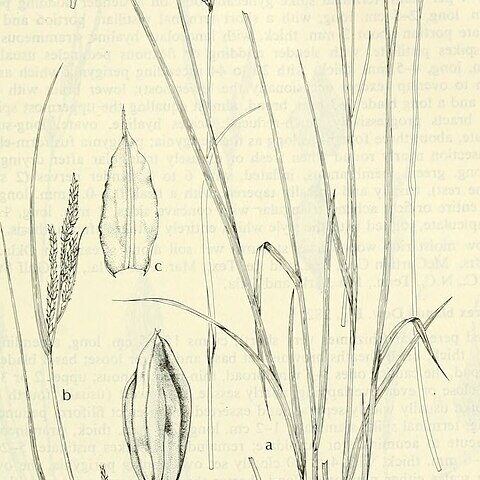Plants densely cespitose. Culms dark maroon at base; flowering stems 25–80 cm, usually longer than leaves at maturity, 1–2 mm thick, glabous to pubescent. Leaves: basal sheaths maroon, bladeless, pubescent, sometimes glabrous, others grading from maroon to green on back, light brown-hyaline on front, dotted or streaked with dark red, pubescent distally; blades flat, 3–7 mm wide, pilose, especially abaxially, sparsely so distally, margins ciliate. Inflorescences: peduncles of lateral spikes slender, 5–20 mm, shorter than spikes, pubescent; peduncle of terminal spikes 5–40 mm, minutely scabrous; proximal bracts nearly equaling but usually not exceeding inflorescences; sheaths 15–25 mm; blades 1.5–3 mm wide. Lateral spikes 2–4, 1 per node, distal 2 usually overlapping terminal spike, others well separated, nodding or drooping at maturity, pistillate with 20–45 perigynia attached 1.5 mm apart, narrowly cylindric, 15–45 × 3–4.5 mm. Terminal spike gynecandrous, 15–45 × 2–4.5 mm. Pistillate scales hyaline with broad green, red dotted midrib, elliptic-ovate, shorter than mature perigynia, apex acute to aristate or awned, awn less than 1 mm, ciliate. Perigynia green to dark olive-green, copiously red dotted, 2-ribbed with 6–10 almost equally prominent veins, loosely enveloping achenes, ellipsoid-ovoid, 3.5–5 × 1.7–2 mm, membranous, base acute or with short stipe, apex gradually tapered to beak, glabrous or less often pubescent; beak minutely bidentate, 0.4–0.7 mm. Achenes distinctly stipitate, 1.7–2.5 × 1–1.5 mm, stipe to 0.7 mm.
More
Much like no. 143 [Carex davisii Schwein. & Torr.]; main lvs 3–5 mm wide; pistillate scales ovate, much narrower and usually shorter than the perigynia, acuminate or the lower short-awned; perigynia ovoid, 3.5–4.6 mm, sharply several-nerved, tapering into a distinct short-beak. Rich, moist or wet woods; se. Va. to Fla. and Tex., n. in the interior to s. Ill. and s. Mo.

